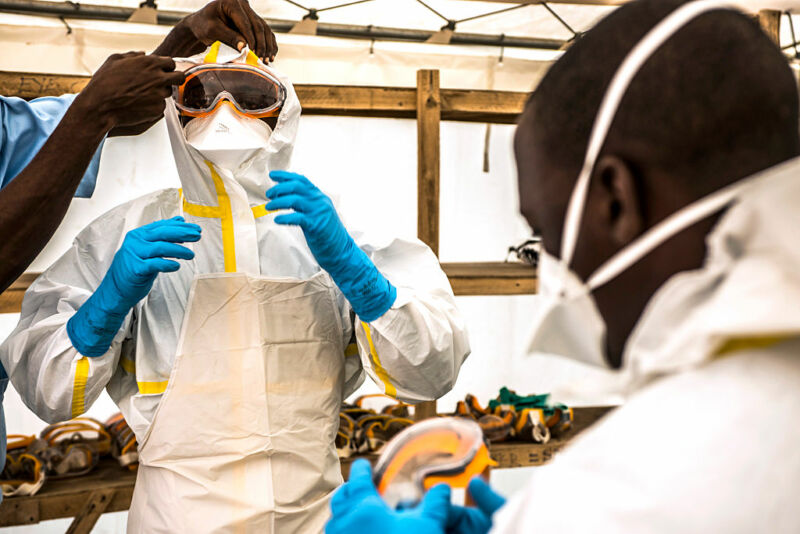
A large international research group released a paper today suggesting that Ebola viruses can emerge from five years of dormancy to trigger a new outbreak of infections. While this isn’t the first instance in which Ebola re-emerged from a previously infected individual, the new results extend the timeframe of risk substantially.
At present, we have little idea how and where the virus persists in the human body. But there are now tens of thousands of people who have survived previous infections, so it’s an area where more research is urgently needed.
A re-outbreak
The African nation of Guinea experienced a small Ebola outbreak that started in January of 2021 when a nurse fell ill. Due to a misdiagnosis, she was not immediately isolated, allowing the virus to spread. Fortunately, a major outbreak that occurred in the same region from 2013 to 2016 resulted in the local health authorities obtaining sophisticated diagnostic equipment, including the real-time RT-PCR machines that are used for COVID-19 testing. This ultimately allowed the authorities to determine that Ebola was the cause of her illness, identify 15 additional cases, and take measures that brought the outbreak to a halt. In all, 12 of the 16 infected died.
In order to better understand the source and spread of the outbreak, samples from these patients were used to obtain the genome of the virus behind the outbreak. This process allows the comparison of the genome’s sequence to that of prior outbreaks and samples taken from bats, which can also carry the virus. An evolutionary analysis can then suggest how the earliest patient became infected.
But in this case, the analysis produced a strange result. All the cases clustered in a tight group that fell within the group of viral variants that had caused the 2013-2016 outbreak in the same region. These cases included some mutations that had only occurred during the earlier outbreak and haven’t been found in any bat populations.
On its own, this result isn’t entirely shocking. It’s possible that the virus could circulate at low levels in isolated populations without drawing the attention of health authorities. If it were to do so, however, it would continue to pick up mutations. But the strain behind the 2021 outbreak didn’t look much different from the one that had been circulating in 2016. It’s like it spent much of the period in between frozen in time.
Suspended animation
For the 2021 strain to have picked up so few mutations in the time since the 2013–2016 outbreak, its normal mutation rate would have needed to drop by a factor of five. The alternative is that, as in the case mentioned earlier, the virus remained dormant in someone who recovered from an infection in the earlier outbreak. The virus has been found in seminal fluid up to 500 days after infections were cleared, and there has been at least one instance of transmission after that amount of time. But the new outbreak would require a dormancy of over three times as long.
Past studies suggest that this sort of persistence would be uncommon. But there are currently over 17,000 survivors from the earlier outbreak, so there’s certainly an opportunity for a rare event to occur.
At the moment, however, we have no idea what tissue Ebola might be hiding out in, much less the mechanism that allows it to go dormant. The only RNA viruses that are known to cause long-lasting infections (called retroviruses) do so by integrating a DNA copy of themselves into their host’s genome. But Ebola doesn’t appear to have any of the genes needed to do this.
The obvious solution is to work with Ebola survivors to check for persistent infections—something that might be integrated into a more general monitoring program given the apparent risk of long-term dormancy. But that poses its own challenges. Ebola survival bears a stigma in many of the communities hit hard by the virus, with those who outlived their infections often losing their jobs and housing. So it won’t necessarily be easy to recruit people to work with the research community on this project.
The situation may be changing, however, as two vaccines against Ebola have recently been approved for use, and others are in testing; they have been deployed to help contain outbreaks over the last few years. Along with changing the public health situation in Africa, these vaccines may begin to shift the social perception of those infected, as well.
Nature, 2021. DOI: 10.1038/s41586-021-03901-9 (About DOIs).
https://arstechnica.com/?p=1795537

